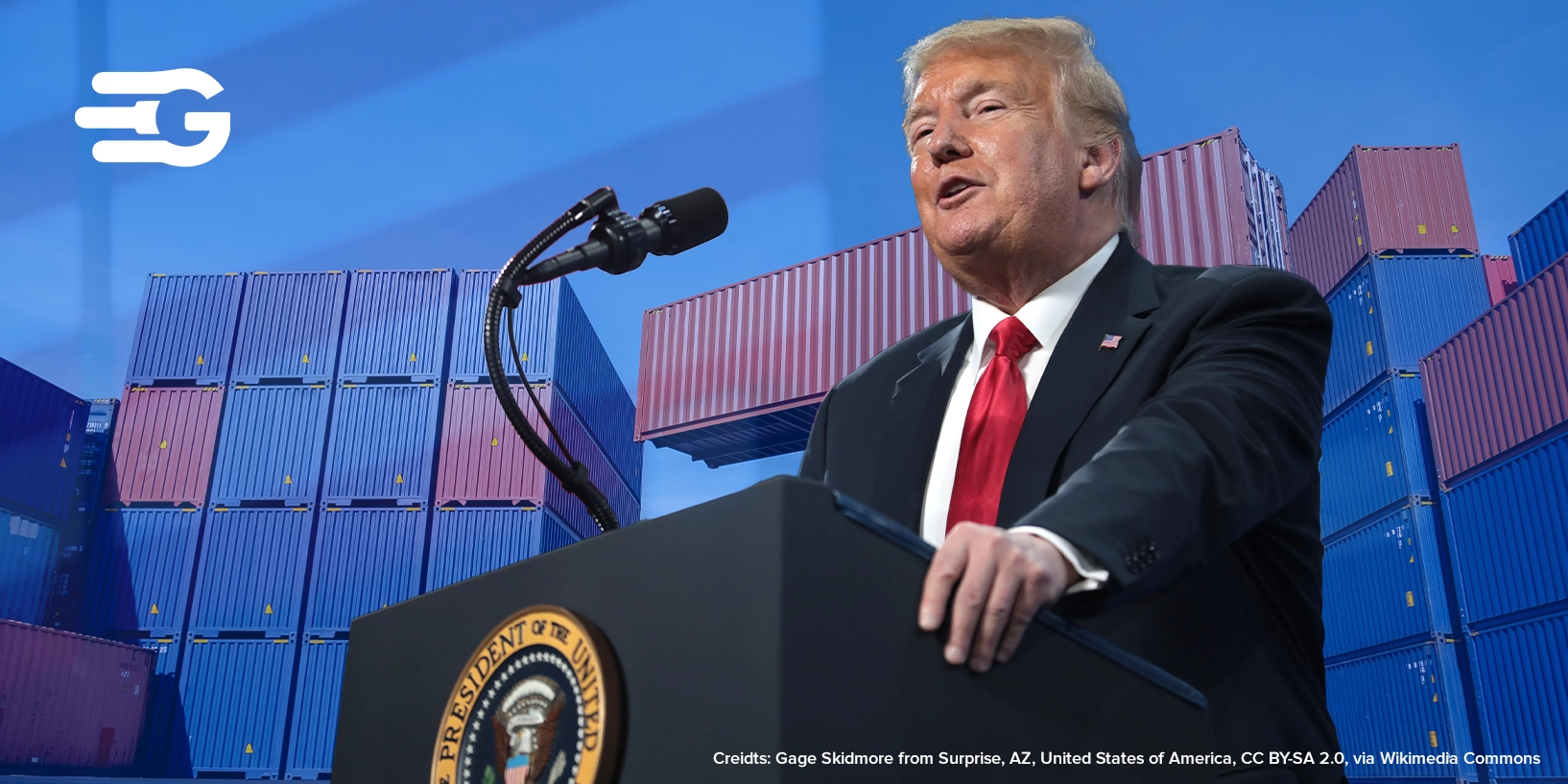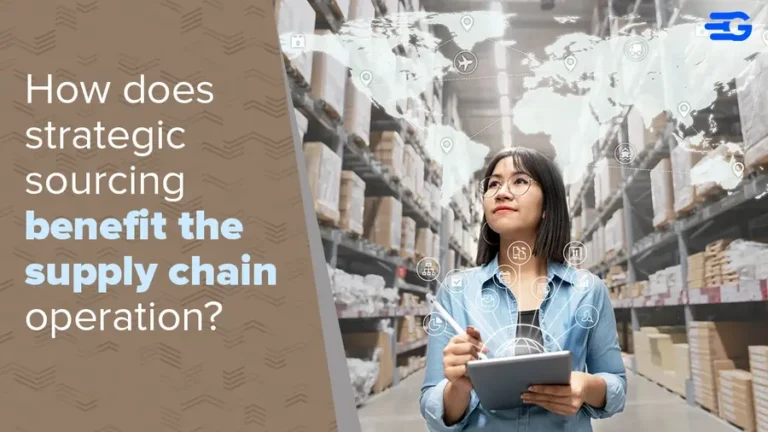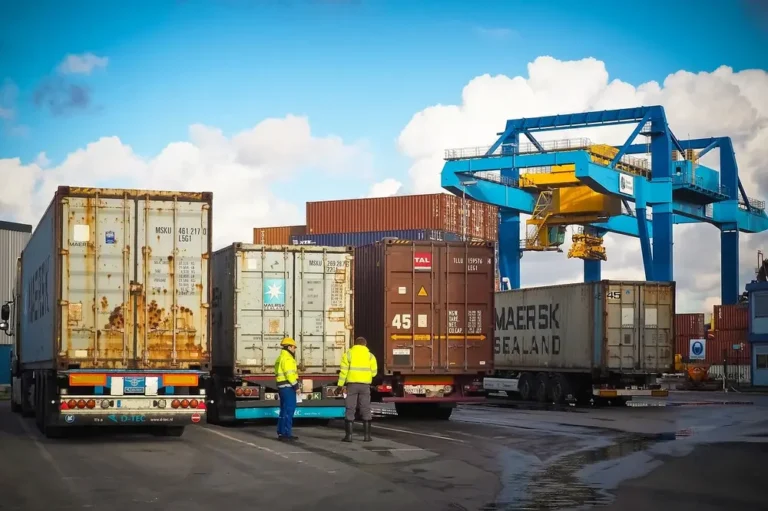Trump’s Second-Term Tariff Impact: The 2018 Deja Vu
In the early hours of November 6th, Donald Trump secured a return to the presidency of the United States following a close race, defying exit polls expectations. This political shift has sent ripples through global markets and the anticipation of Trump’s second-term tariff impacts have cast uncertainty over the future of international trade and economic policy.
Increased global tariffs were one of the heavier points under the Trump campaign, with a promise of 2018 norms, only stronger and higher. In a nutshell, the president-elect promises to increase global tariffs, across the board, by 10-20 percent and a 60-100 percent tariff on Chinese imports. While it is impossible to know how far he will be able to follow through, the impact of the anticipation is leading us into a case of disruptive front loading.
The 2018 Crisis
In 2018, Donald Trump’s tariff policy marked a significant shift in U.S. trade strategy, aiming to reduce the trade deficit and protect domestic industries. Key measures included a 25% tariff on steel and 10% on aluminum, focusing on Chinese imports, which eventually escalated to tariffs on over $250 billion worth of Chinese goods.
The impact of US-China tariffs on the global supply chain was substantial. Costs rose for U.S. businesses reliant on imports, leading to higher production costs, especially in manufacturing and construction. Companies restructured their supply chains, shifting production away from China to countries like Vietnam and Mexico, though this took time and investment. The tariffs also sparked retaliatory measures from China, disrupting U.S. exports, particularly agricultural products.
Strategically, the tariffs led to a supply chain diversification away from China, with a greater emphasis on regional manufacturing hubs and logistics technology. While some domestic industries saw short-term benefits, the broader effects included higher costs, disrupted trade, and strained global trade relations, prompting a reevaluation of global supply chain strategies.
Trump’s second-term tariff impacts are expected to follow a similar trajectory.
US Importer Anxiety – Trump’s second-term tariff impact
Trump’s second-term tariff impact renews these old concerns and pushes US-based importers into crisis management. In a CNBC article, Paul Braiser (vice president of global supply chain for ITS Logistics) discusses this return to 2018 frontloading patterns. He emphasizes how this time the impact of tariffs on US businesses 2024 is actually global and not just concentrated on Chinese imports. But it’s important to note that this strategy isn’t always the best recourse. Frontloading can cause large-scale disruptions and chaos in the supply chain – a trend we have already seen once before – here’s how:
Surge in Freight and Logistics Costs:
When Trump enacted tariffs in 2018, businesses rushed to import goods ahead of expected price hikes causing freight frontloading 2024, leading to a significant spike in freight rates, and ocean container shipping rates increased by over 70%. With a similar scenario expected now, the frontloading, one of Trump’s second-term tariff impact, of imports to avoid tariffs could create congestion at major U.S. ports, driving up shipping and logistics costs. This freight and logistics cost impact in 2024 is a key concern for companies forecasting a highly volatile environment (Xeneta, 2018).
Port Congestion Woes:
Port congestion, exacerbated during the 2018 tariff period, remains a major concern. With businesses pushing to stockpile goods, we could see increased waiting times at U.S. ports, particularly in major hubs like Long Beach and Los Angeles. Such port congestion on US ports in 2024 could cause delays, making it harder for companies to maintain steady inventory levels and meet customer demands, further increasing logistical strain.
Overpopulated Shipping Lines
Trump’s second-term tariff impact could lead to overpopulation on alternative shipping routes as companies attempt to circumvent more congested or higher-tariffed paths. As freight diversions shift traffic to less used routes, these pathways can become bottlenecked, causing delays and higher shipping rates. Previously less crowded routes may face unexpected strain, disrupting established trade patterns. The ripple effect includes increased logistics costs, shipment delays, and overall strain on infrastructure, impacting the broader supply chain.
Diversification of Supply Chains:
The 2018 tariffs led to an accelerated shift in sourcing strategies, with many U.S. companies moving production out of China to avoid high import costs. This diversification trend is expected to continue as one of Trump’s second-term tariff impacts as businesses look to mitigate the risk of new tariffs. Countries like Vietnam, Mexico, and India are likely to see increased sourcing, although these shifts involve costs, time, and logistical planning to set up alternative supply chains.
Trade Tensions and Retaliation:
As in 2018, Trump’s second-term tariff impact creates a real risk of retaliatory tariffs from trading partners, especially China. U.S. agricultural exports, including soybeans and pork, faced major tariffs during the previous trade war, and similar disruptions could occur again. These tensions complicate global trade relationships and make supply chains even more unpredictable. These retaliations can be more international with the coming of the across-board tariff numbers.

How Will International Trade
Change with New Trump Administration?
Mexico – China’s Secret Path
Trump’s second-term tariff impact lead to a projected 60 – 100 percent increase in tariffs for China, a bold move for the newly formed republican government. Experts believe that while the promised number may be unrealistic, the hike will be significant. As the Americans say, it is not the President-elect’s first rodeo.
Even though the 2018 tariff raise reduced Chinese imports, a new avenue for the same opened as China beat tariffs through Mexico. China has been increasingly using Mexico as a strategic backdoor to the U.S. market, leveraging the North American Free Trade Agreement (NAFTA) and its replacement, the USMCA (United States-Mexico-Canada Agreement).
The strategy involves Chinese manufacturers setting up operations in Mexico to bypass U.S. tariffs, especially those imposed during the Trump administration. By shipping goods from China to Mexico, where they can be processed, assembled, or finished, Chinese companies can take advantage of the preferential tariff rates granted by the USMCA, which allows goods that meet specific criteria to enter the U.S. without the punitive tariffs imposed directly on Chinese imports.
The renewed uncertainty surrounding the U.S.-Mexico trade relations in regard to the Chinese impact, is fueling anxiety among logistics companies and manufacturers involved in cross-border trade. The prospect of the renegotiations of USMCA tariff impact (U.S.-Mexico-Canada Agreement) has raised fears of disruptions to the historically strong trade flow between the two countries. U.S. businesses, particularly in sectors like automotive manufacturing, agriculture, and electronics, rely heavily on Mexican imports, and tariffs could drive up costs, making goods more expensive for consumers on both sides of the border.
In the short term, companies are concerned about the potential for immediate tariff hikes as a result of Trump’s second-term tariff impact, which could lead to price increases and disruptions in supply chains. With over $2 billion crossing the U.S.-Mexico border daily, even small changes to tariffs could have significant consequences, creating a ripple effect throughout the region.
Additionally, the possibility of new tariffs may slow down investment in Mexico, as companies like John Deere and Tesla have already scaled back manufacturing plans due to uncertainties. This creates a fear that long-term trade relationships could be jeopardized if businesses begin to view Mexico as a less reliable partner in the face of evolving tariff threats.
Trump’s second-term tariff impact in Mexico is also paired with the trucking industry facing challenges as higher rates and logistical bottlenecks exacerbate existing pressures. Most importantly a driver shortage and rising fuel costs. These challenges are compounded by the fluctuating value of the Peso, which, while providing some relief to Mexican exporters, creates volatility in trade costs.
The Benefit for Shipping Companies
In the context of the Trump’s second-term tariff impact, frontloading could offer shipping companies an opportunity to maximize their earnings. As importers rush to beat tariff increases, shipping companies could see a surge in freight volumes, leading to higher demand for container space and premium rates. This increased demand would allow shipping companies to negotiate more favorable rates, optimize their capacity, and ensure better fleet utilization. These adjustments would create a more profitable environment for shipping companies by stabilizing their operations during the political and economic uncertainty surrounding tariff adjustments.
Furthermore, by anticipating these surges, shipping companies can take proactive measures to better manage logistics challenges, improve scheduling, and minimize inefficiencies related to empty container returns. With a predictable uptick in imports ahead of tariff hikes, they can also negotiate contracts early, ensuring steady business flow and customer loyalty even as global trade dynamics shift.
Frontloading can give shipping companies more control over their profitability, helping them to stay competitive in an increasingly uncertain global supply chain environment.
Strategies for Mitigation
It is unlikely that the tariff numbers will be clearer before January, but logistics providers must start preparing for potential disruptions caused by the the looming fear of Trump’s second-term tariff impacts. To combat potential port congestion and ensure smooth operations, logistics providers can leverage advanced digital tools that optimize shipment management:
- Real-Time Tracking and Predictive Analytics: Solutions like GoComet’s platform play a vital role in handling such challenges. By employing predictive analytics, these tools forecast potential delays and recommend alternative routing options to reduce bottlenecks. This is crucial in preparing port congestion solutions and rerouting shipments preemptively.
- Optimized Load Management: Advanced tracking solutions provide insights into shipment flow and load balancing, enabling logistics managers to prioritize and sequence cargo effectively. This minimizes the risk of piling up goods at already busy ports and helps maintain throughput.
- Enhanced Communication Channels: AI powered logistics software, like GoComet’s Go Track, facilitate better coordination across supply chain stakeholders, including freight forwarders, customs brokers, and transport operators. By streamlining communication, providers can rapidly adjust to sudden shifts in freight volume and changes in port conditions.
- Data-Driven Decision Making: Using AI-driven data integration, logistics providers can monitor real-time port statuses, weather conditions, and vessel locations. This informs strategic decision-making that reduces dwell times and enhances the predictability of delivery schedules.
Leveraging 2018 Lessons
During the 2018 trade tensions, many logistics providers encountered a similar environment of tariff uncertainty and front-loading. Key takeaways from that period include:
- Pre-Emptive Capacity Allocation: Securing space and agreements with carriers early helped businesses mitigate the risk of shipment delays.
- Collaboration with Multiple Carriers: Diversifying carrier options reduced dependence on a single transport route, preventing extensive disruption when certain lanes became congested.
- Flexible Warehousing Solutions: Utilizing short-term warehousing near major ports allowed companies to manage overflow efficiently, alleviating port congestion.
By building on these proven strategies and integrating modern technology such as GoComet’s tracking and analytics capabilities, logistics providers can navigate potential disruptions from Trump’s second-term tariff impact effectively. This not only ensures continuity in service delivery but also protects clients from the downstream effects of policy changes, maintaining the reliability of the supply chain amid shifting trade dynamics.







